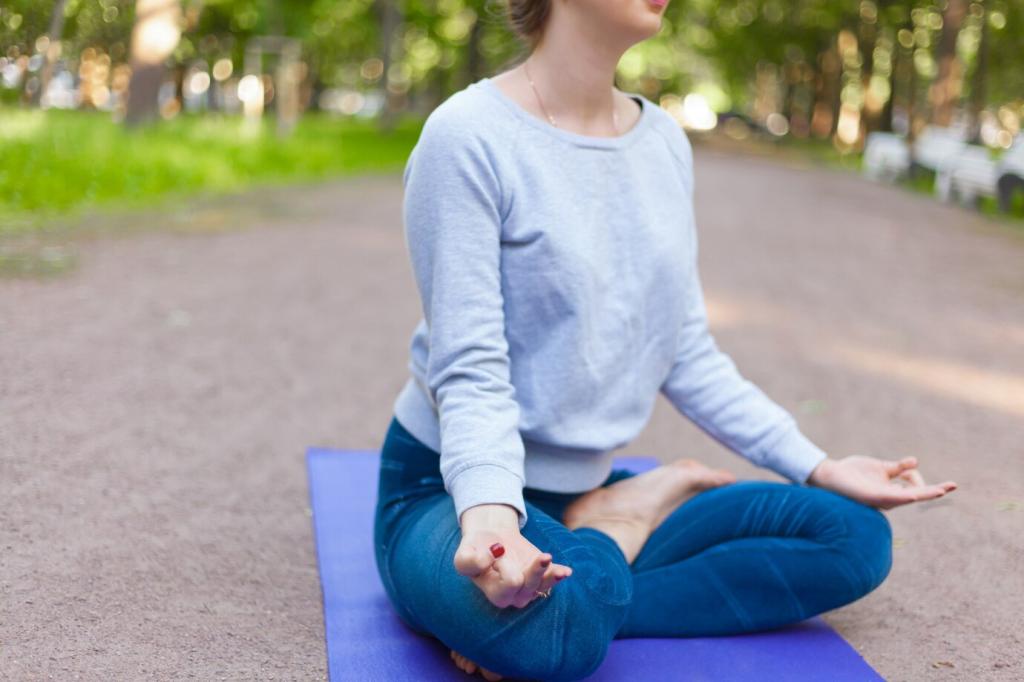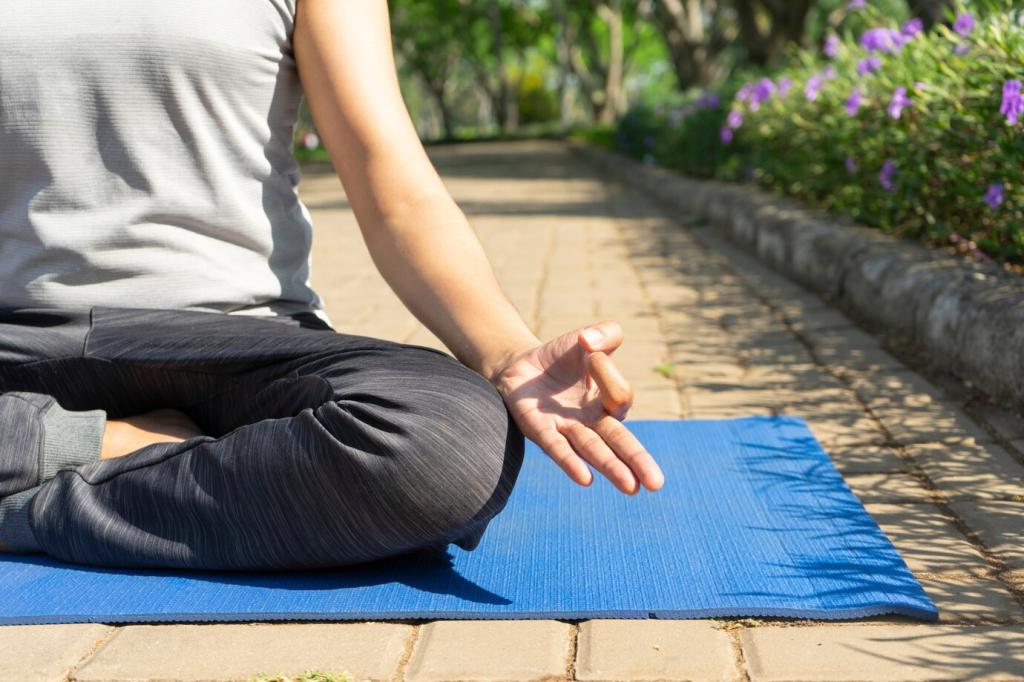
Daily Meditation Practices to Relieve Stress: Your Gentle Path to Calm
Chosen theme: Daily Meditation Practices to Relieve Stress. Welcome to a space where small, consistent moments of mindfulness soften the edges of a busy day. Together we’ll explore practices that fit real lives, reduce tension, and nurture steadiness. Join in, share your experience, and subscribe for weekly mindfulness prompts and community challenges.


Foundations of Daily Meditation to Ease Stress
Stress relief compounds through routine. A five-minute daily sit trains your nervous system to recognize safety, shortening recovery after stressful moments. Try a streak of seven days, notice subtle shifts, and comment below with what feels different—sleep ease, less reactivity, or a gentler inner voice.
Foundations of Daily Meditation to Ease Stress
Choose one anchor and return to it kindly whenever the mind wanders. A soft belly breath, a slow body scan, or a simple ambient sound can steady attention. Test each anchor for a week, track stress levels, and tell us which feels most reliable during challenging afternoons.
Micro-Meditations for Busy Schedules
The 60-Second Box Breath
Inhale four counts, hold four, exhale four, hold four—repeat three cycles. This rhythm signals the body to downshift. Use it before opening emails or stepping into meetings. Share your favorite moment for box breathing, and tag a colleague who could use a one-minute calm.
Mindful Commute Reset
On the bus or in a rideshare, rest your gaze, feel the seat’s support, and match breath to passing landmarks. Let thoughts drift like scenery. Arriving grounded changes the first hour dramatically. Comment with your commute route and the sensory detail that best settles you.
Pre-Meeting Centering Ritual
Place both feet on the floor, relax your jaw, and name three sensations you feel right now. Exhale slowly, then set an intention: clarity, kindness, or curiosity. This brief ritual lowers anticipatory stress and improves listening. Invite your team to try it and share outcomes.
How Meditation Calms the Stress Response
From Fight-or-Flight to Rest-and-Digest
Daily meditation gently activates the parasympathetic nervous system, easing heart rate and muscle tension. Over time, cortisol peaks soften, and emotional reactivity wanes. Track your pulse before and after five-minute sessions for two weeks, then post your observations for others seeking evidence-based encouragement.
Training Attention, Taming Rumination
By returning attention to the present, mindfulness reduces rumination that fuels stress. You are not stopping thoughts; you are changing your relationship to them. Try noting—labeling thoughts as planning, remembering, or worrying—and share which label appears most often during your afternoons.
Vagus Nerve Friendly Practices
Slow exhalations, humming, and gentle breath holds stimulate vagal tone, enhancing calm and social engagement. Finish each session with a longer exhale than inhale. Notice shifts in voice steadiness and facial softness. Report your experience; your data can inspire someone’s first courageous practice.
Simplicity Over Perfection
A cushion, a chair, soft light, and a timer are enough. Declutter the immediate view to reduce cognitive load. Keep a blanket nearby for warmth. Share a photo of your practice nook, however humble, and describe one detail that makes it feel unmistakably yours.
Soundscapes That Support Stillness
Use gentle rain, distant waves, or quiet birdsong to mask distractions. Test silence as well—sometimes the room’s natural hum is perfect. Create a short playlist and rotate weekly. Tell us which sounds calm your nervous system fastest and why they resonate with your daily rhythm.
Real-Life Stories: Stress Relief in Practice
Between shifts, a nurse sat by a stairwell, closed her eyes, and practiced three rounds of box breathing. She reported fewer post-shift headaches and kinder handoffs. If you work in healthcare, try this today and share how micro-moments ripple through patient and team interactions.
Real-Life Stories: Stress Relief in Practice
After bedtime routines, one parent does a ten-minute body scan beside the crib, matching breath with the child’s sleeping rhythm. Over weeks, arguments at dinner dwindled. Parents, test a five-minute version tonight and comment on changes in patience during morning routines.



Tracking Progress and Staying Motivated
After each sit, write one sentence: what you noticed, not whether it was perfect. Over time, patterns appear, stress loosens. Post your favorite journal prompt in the comments and inspire someone starting their first seven-day streak this week.
Tracking Progress and Staying Motivated
Attach practice to routines—coffee, commute, or shutdown ritual—and set gentle reminders. Place your cushion where you cannot miss it. Invite a buddy and send a daily check-in emoji. Share which anchor habit works best and how it changed your stress curve this month.


